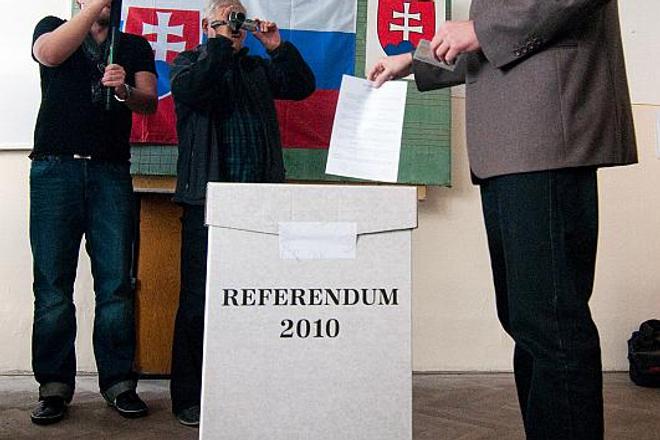Slovakia’s seventh referendum took place on September 18 and, as with most of its forerunners, failed to attract enough voters for the result to be declared valid. At least 50 percent of eligible voters have to turn out for a referendum in Slovakia to be binding.
Voters were asked to consider six questions in the referendum. The first three concerned whether parliament should cancel the mandatory monthly payments that support Slovakia’s public-service media, whether to limit immunity from prosecution for members of parliament, and whether to reduce the number of seats in parliament from 150 to 100 beginning from the next election term. The other three issues dealt with restricting government offices from purchasing cars worth more than €40,000, permitting internet voting in future elections, and excluding persons elected to public office from the right to reply granted under Slovakia’s amended Press Code.
While the opposition complained that the referendum was a waste of money, Richard Sulík, whose SaS party initiated the petition which prompted the referendum, argued that the results “are binding for politicians” even though the referendum itself was not valid. In fact, more than a million citizens expressed their opinions in the poll on September 18, but that still constituted only around 23 percent of eligible voters.
The referendum was announced in July, after the president’s office evaluated 400,000 signatures collected on petition sheets and ruled that 369,000 were valid. 350,000 or more valid signatures are required to mandate a referendum in Slovakia. The petition sheets were delivered to the president on June 9 by SaS.
SaS started its petition initiative shortly after the party was founded. Observers agreed that the initiative was part of the new party’s strategy to make itself more visible. SaS attempted to have the referendum held along with the parliamentary election, but did not succeed. The referendum was thus criticised as unjustified, as many of the issues had meanwhile been incorporated into the new government’s programme statement.




 Richard Sulík (source: ČTK)
Richard Sulík (source: ČTK)